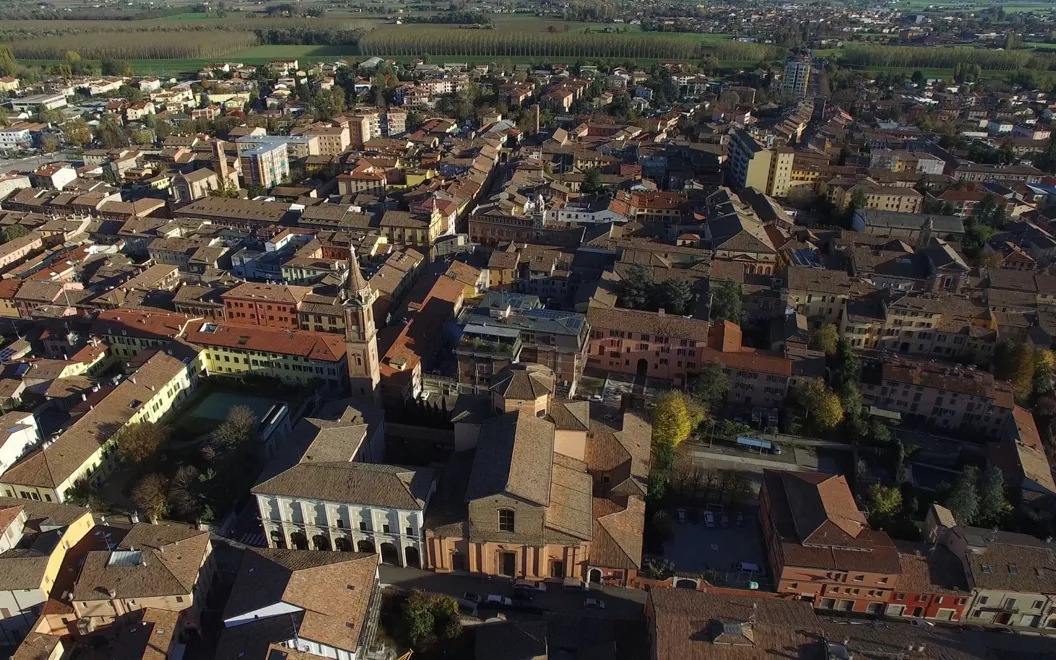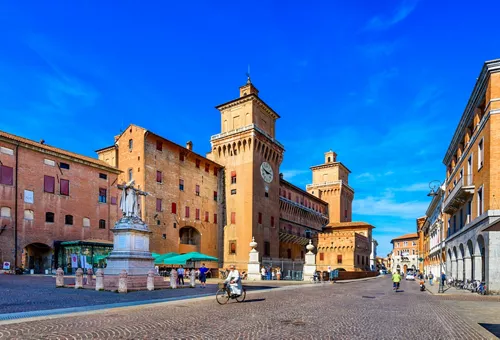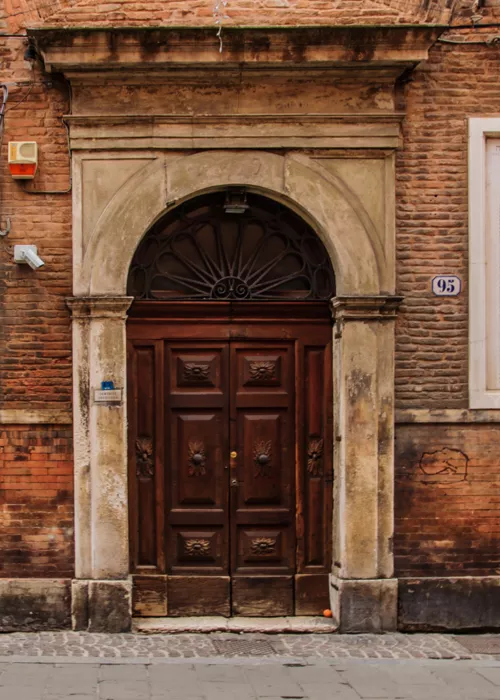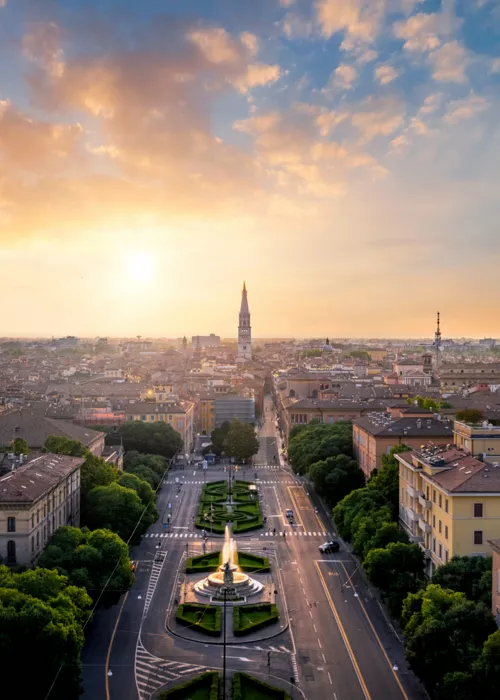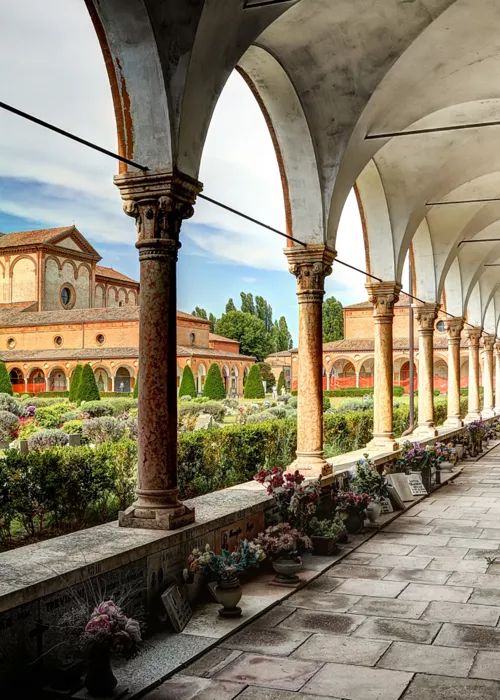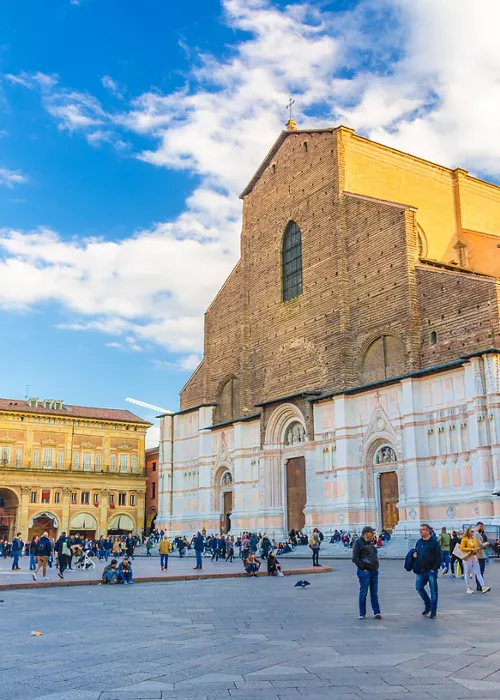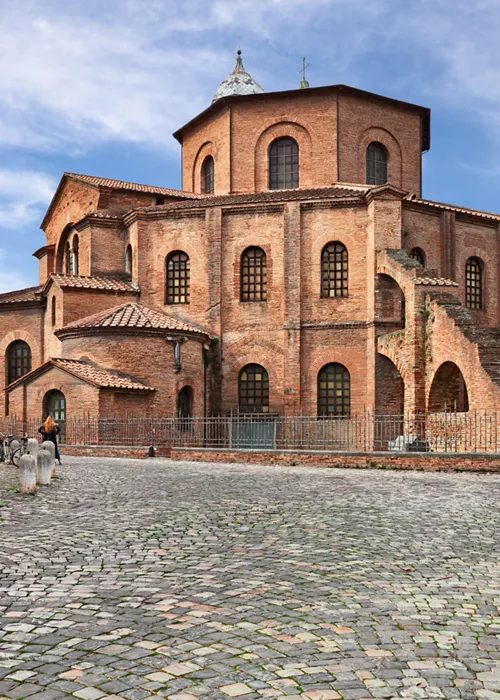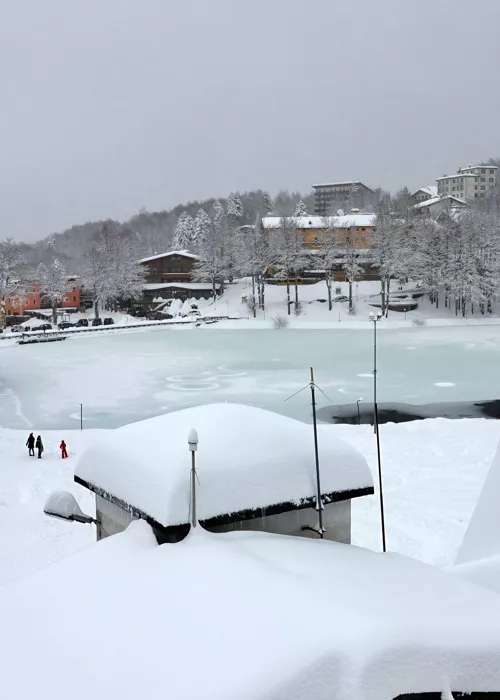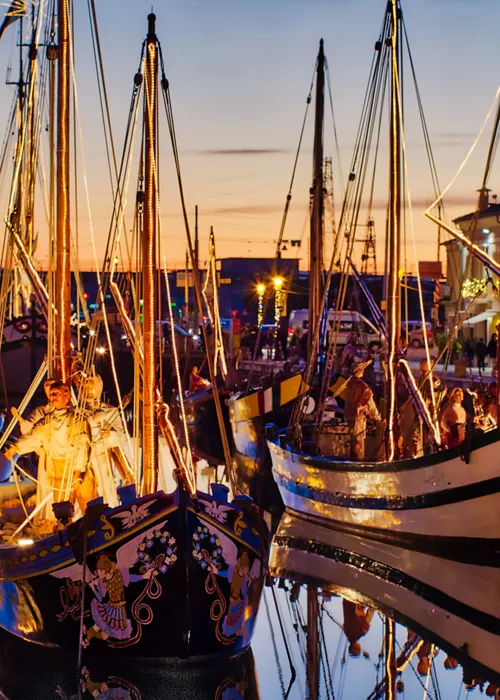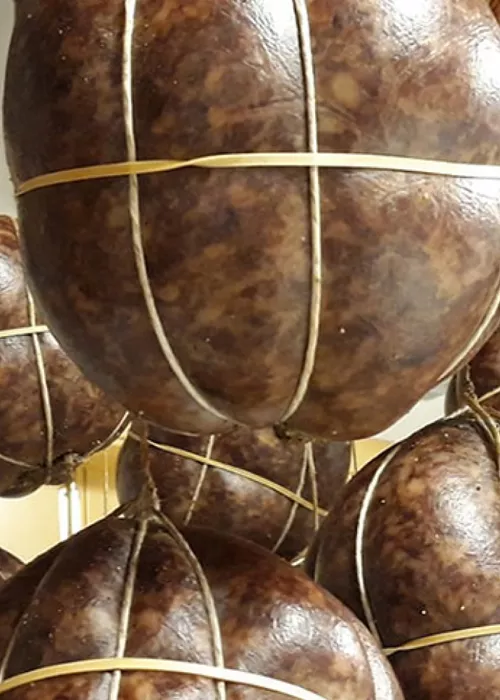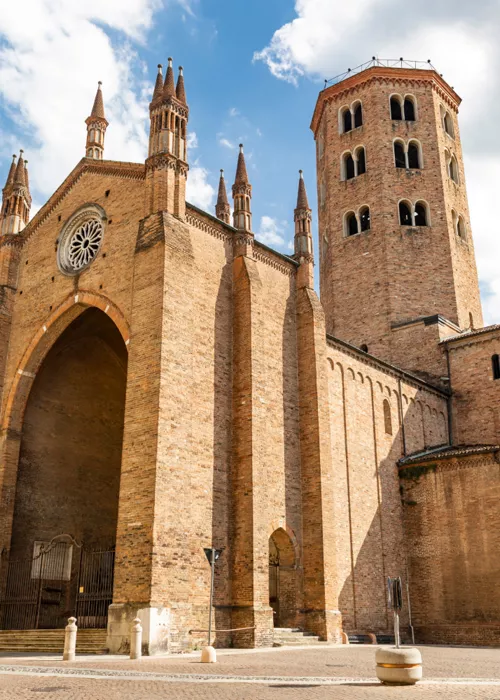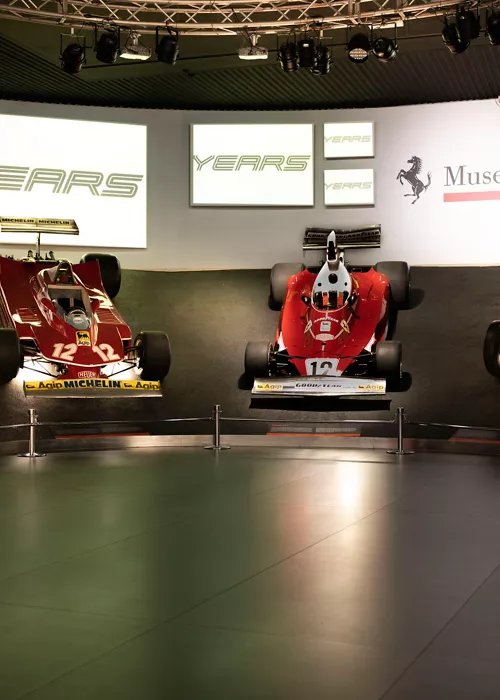Hundred: small border capital
5 minutes

Cento: a cultural capital for centuries
Cento, capital of art
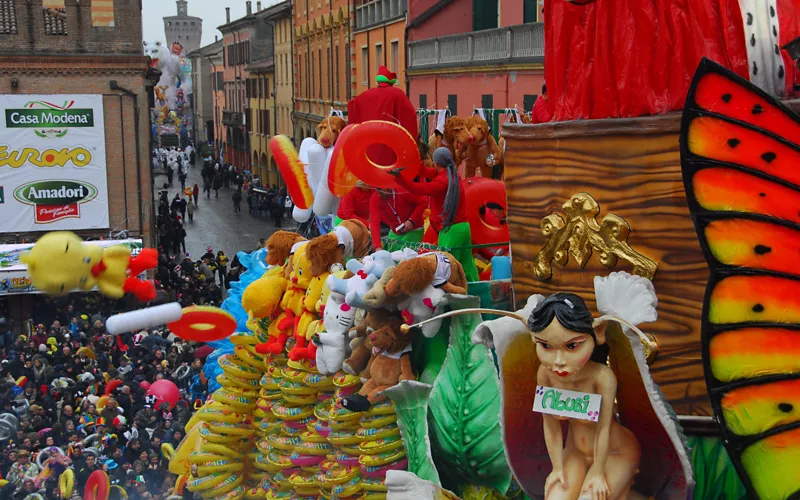
Often described as a "borderland", Cento is perhaps one of the most characteristic and heterogeneous towns in the province of Ferrara. Located just a few kilometres from its capital, the town has always been strongly influenced by the cities of Bologna, Modena and Reggio Emilia that surround it and have shaped its history, appearance and culture.
Its centuries-long affiliation with the Diocese of Bologna have given it an architectural appearance with a strongly marked character, just as the strong political-administrative ties and the eternal struggle to tame the waters have profoundly linked it to the Ferrara area.
The proximity of the large and powerful city centres has made Cento a place of collaboration and connection: the strong spirit of invention and surprise, which comes to life in the most varied forms, is exemplified in the famous Carnival that attracts thousands of visitors to the city every year.
Cento as a cultural centre since the 16th century
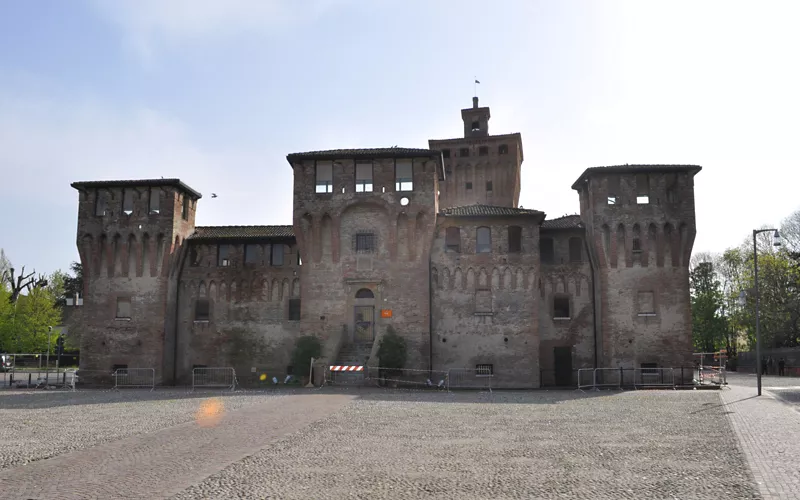
As early as the 16th century, at the height of Humanism, Cento became culturally important, laying the foundations of the modern Italian language. In 1543, in fact, Alberto Accarisio printed, with the help of an itinerant printer, his \"Vocabolario, Grammatica et Orthographia de la lingua volgare\", the first glossary of the vernacular language, which would be taken up almost eighty years later by the Academics of the Crusca in the first dictionary of the Italian language.
Il Guercino seen by Goethe

The strong innovative impulses that characterised the city of Cento and its inhabitants are reflected in the works of its illustrious citizens: if Accarisio wanted to harmonise the good in language with his \"Vocabolario\", the works of Giovanni Francesco Barbieri, nicknamed \"Il Guercino\", operate a gentle revolt by rediscovering a quiet grace and free grandiosity.
Johann Wolfgang von Goethe himself, in his \"Italian Journey\", recognises and celebrates their magnificence and simplicity, allowing the untrained eye to recognise them at first glance. Goethe, in his stop in Cento, was also struck by the extent of the cultivated fields wrested from the marshes by the tenacious collective work of the Cento farmers.
Cento and cuisine
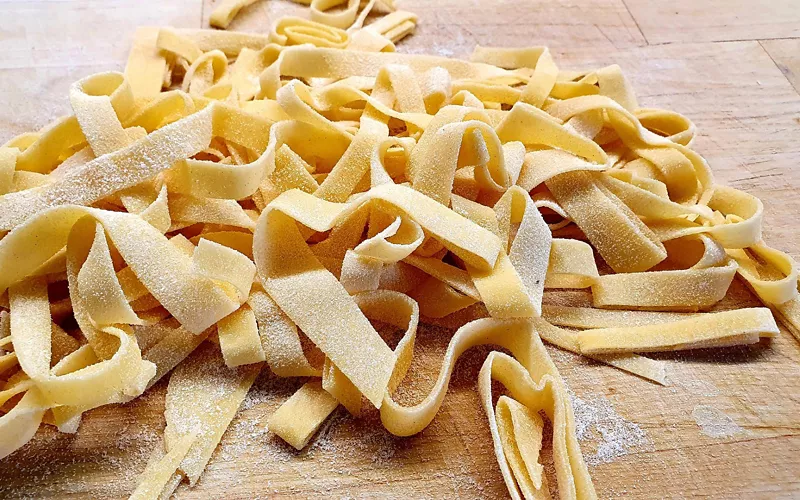
The history and culture of Cento is based on the ability to turn a limitation into a resource, and this principle is reflected in every area of the city\'s life, in all its events and traditions.
Gastronomy, too, is based on this principle, as evidenced by the deep-rooted tradition in the production of cured meats, such as \"salama da sugo\" and \"cotechino\", and the use of products that the wetland area, in which the city is located, has to offer. A reminder that we are in a borderland is also provided by traditional dishes such as the legendary tortellino of Bolognese origin and the pumpkin tortellone of Este ancestry, artfully prepared by the hands of the legendary sfogline (sfoglia pasta makers), who are also capable of a skilful reworking of classic tradition.
Historic Workshops
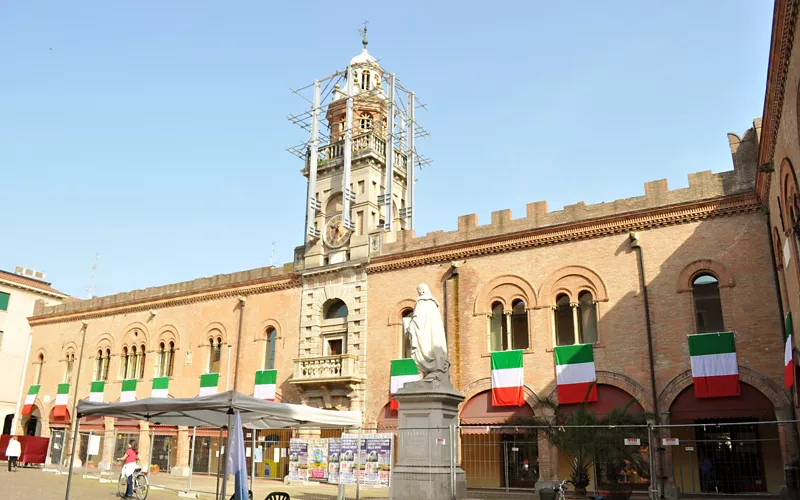
The historic centre of Cento, with its porticoes, is a true Natural Shopping Centre. A land of mills and pasta factories, Cento offers visitors the opportunity to shop and delight their palate among the countless old shops and restaurants. An itinerary in the city, among historical-artistic beauties and food and wine excellences, can only start from the magnificent Piazza del Guercino. Dominated by the bulk of the Palazzo dei Conservatori and "guarded" by its elegant Torre dell\' Orologio (Clock Tower), the square welcomes visitors with its porticoes and guides them on an authentic discovery of the city. The interior of the building houses the modern art gallery that preserves works by Giacomo Balla and Lucio Fontana. Piazza del Guercino is the most central point of the old town. A short distance away, you can visit the Church of San Pietro, dating back to the 13th century, home to the Reverenda Fabbrica del mosaico (Reverenda Mosaic Factory) and embellished with works by Guercino. Another symbol of the city is the Basilica Collegiata di San Biagio Vescovo e Martire. Founded as an ancient oratory in the first millennium, it is beloved by the people of Cento for the sweetness of its chiming bells and for the numerous works of art preserved in its interior, among which is the painting by Guercino depicting "San Carlo Borromeo in orazione" ("San Carlo Borromeo in prayer").
The other Caravaggio
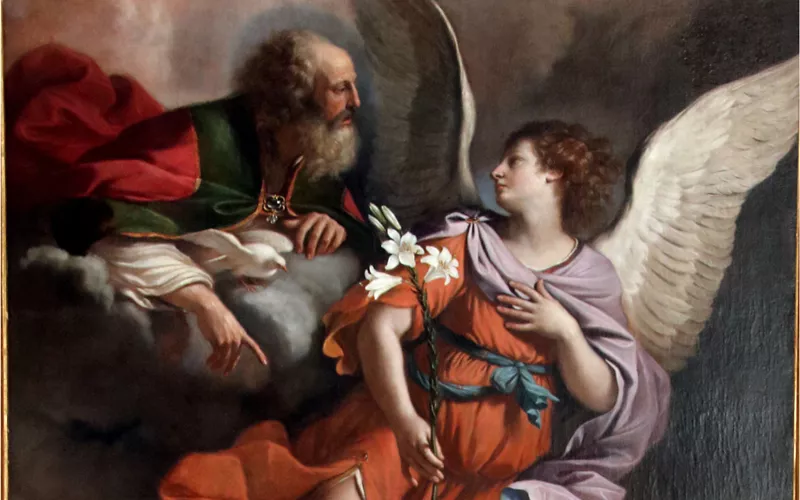
Considered to be one of the most representative artists of the mature Baroque phase, the name of Guercino in Cento, as Goethe put it, "is sacred, on the lips of children as well as adults". Guercino, who lived most of his life in Cento, accompanies us throughout our journey.
His completely unique idea of bringing forms to life in space earned him the nickname "Altro Caravaggio" (The Other Caravaggio). Guercino constructs space with light, just like the Lombard master, but delineates and gives body to the figures through a luminosity that seems to rain down from the background: a symphony of powerful chiaroscuro that, thanks to his progressive mastery of contrast and daring use of colour, touches accents of extraordinary intensity. His luminous research culminates in a kind of scenic effect, as in the painting "S. Giuseppe e S. Francesco" ("St. Joseph and St. Francis") in the Pinacoteca Civica "Il Guercino".
Cento fully reflects the work of Guercino. Within its walls, in fact, echo a plurality of stimuli that the welcoming and sensitive soul of the city transforms into harmony.
Cento and the cinema
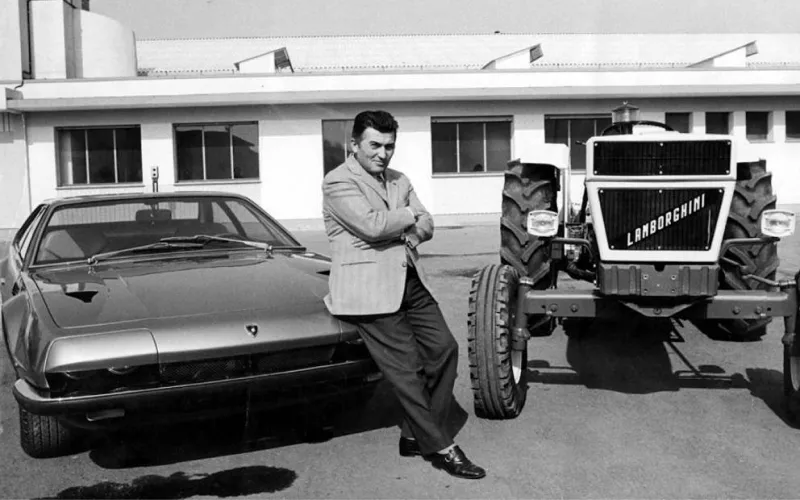
Certainly, Cento is indeed a small capital of art, cuisine, and precious and brilliant conviviality; a city that has been able to enter every sphere of Italian culture.
Also from a cinematic point of view, this region has been able to speak to Italians and about Italians.
In addition to being the set of the recent documentary about Ferruccio Lamborghini, who was born in the hamlet of Renazzo and began producing first his tractors and then his famous cars, a few years ago it was chosen as the set for the film "My Brother Chases Dinosaurs (Mio fratello rincorre i dinosauri)" directed by Stefano Cipani and based on the novel of the same name by Giacomo Mazzariol.
Two stories that tell of frontiers crossed with genius, inventiveness and determination, and of the importance of pursuing one's dreams. It is no coincidence, perhaps, that they speak of the very spirit of this city that, just like a tightrope walker, manages to dance through the clouds beyond all borders.

